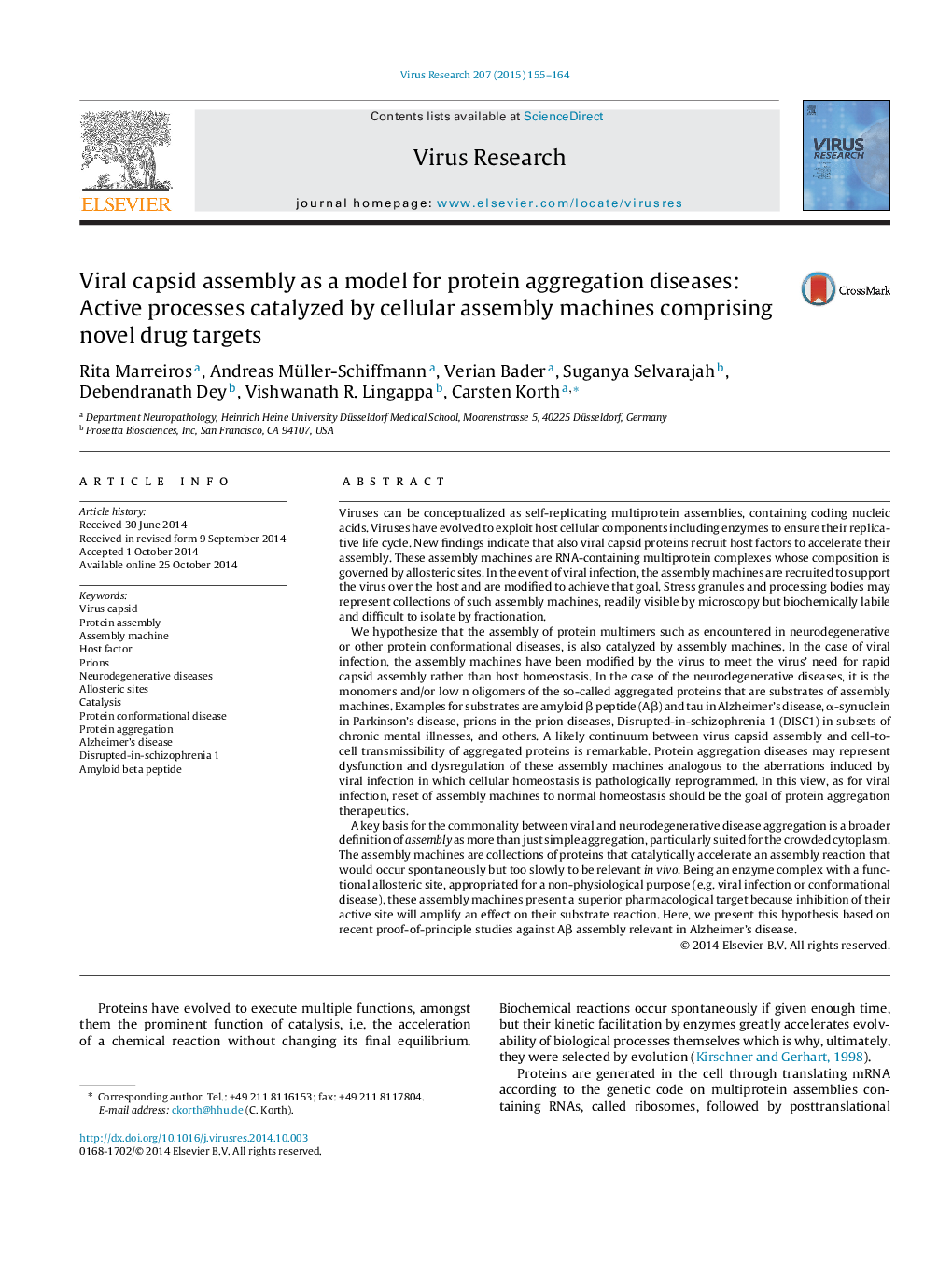| Article ID | Journal | Published Year | Pages | File Type |
|---|---|---|---|---|
| 6142205 | Virus Research | 2015 | 10 Pages |
â¢Virus capsid assembly and protein assembly in neurodegenerative diseases may refer to overlapping or shared active mechanisms of catalyzed multimerization by cellular assembly machines.â¢Allosteric sites in host cell assembly machinery provide a pharmacological target for interfering with protein assembly to restore cellular homeostasis.
Viruses can be conceptualized as self-replicating multiprotein assemblies, containing coding nucleic acids. Viruses have evolved to exploit host cellular components including enzymes to ensure their replicative life cycle. New findings indicate that also viral capsid proteins recruit host factors to accelerate their assembly. These assembly machines are RNA-containing multiprotein complexes whose composition is governed by allosteric sites. In the event of viral infection, the assembly machines are recruited to support the virus over the host and are modified to achieve that goal. Stress granules and processing bodies may represent collections of such assembly machines, readily visible by microscopy but biochemically labile and difficult to isolate by fractionation.We hypothesize that the assembly of protein multimers such as encountered in neurodegenerative or other protein conformational diseases, is also catalyzed by assembly machines. In the case of viral infection, the assembly machines have been modified by the virus to meet the virus' need for rapid capsid assembly rather than host homeostasis. In the case of the neurodegenerative diseases, it is the monomers and/or low n oligomers of the so-called aggregated proteins that are substrates of assembly machines. Examples for substrates are amyloid β peptide (Aβ) and tau in Alzheimer's disease, α-synuclein in Parkinson's disease, prions in the prion diseases, Disrupted-in-schizophrenia 1 (DISC1) in subsets of chronic mental illnesses, and others. A likely continuum between virus capsid assembly and cell-to-cell transmissibility of aggregated proteins is remarkable. Protein aggregation diseases may represent dysfunction and dysregulation of these assembly machines analogous to the aberrations induced by viral infection in which cellular homeostasis is pathologically reprogrammed. In this view, as for viral infection, reset of assembly machines to normal homeostasis should be the goal of protein aggregation therapeutics.A key basis for the commonality between viral and neurodegenerative disease aggregation is a broader definition of assembly as more than just simple aggregation, particularly suited for the crowded cytoplasm. The assembly machines are collections of proteins that catalytically accelerate an assembly reaction that would occur spontaneously but too slowly to be relevant in vivo. Being an enzyme complex with a functional allosteric site, appropriated for a non-physiological purpose (e.g. viral infection or conformational disease), these assembly machines present a superior pharmacological target because inhibition of their active site will amplify an effect on their substrate reaction. Here, we present this hypothesis based on recent proof-of-principle studies against Aβ assembly relevant in Alzheimer's disease.
